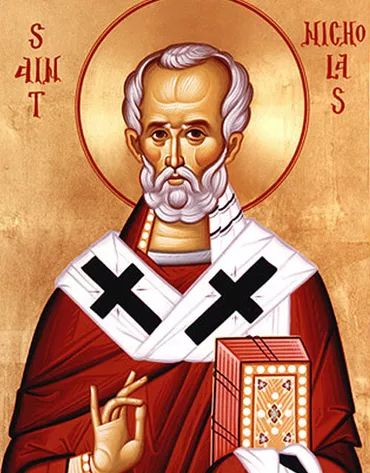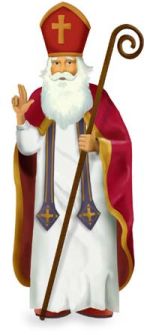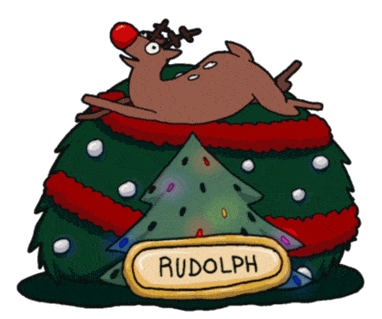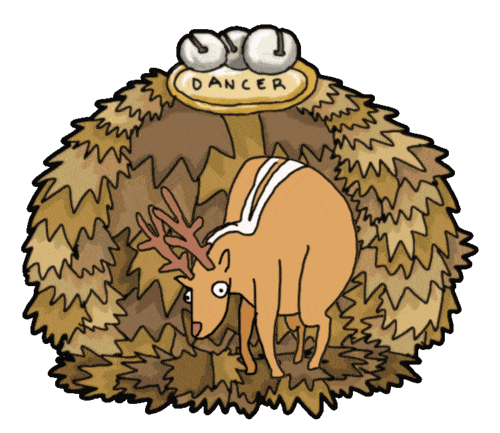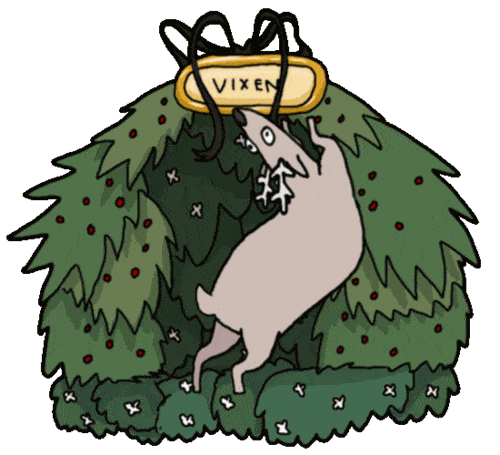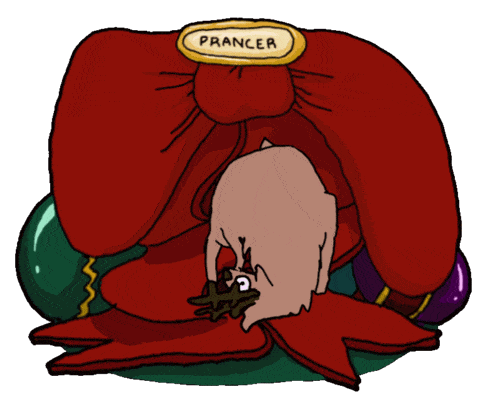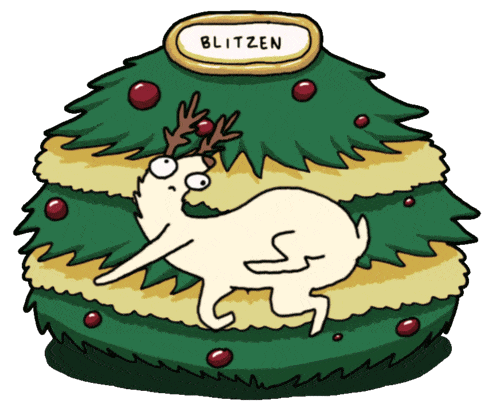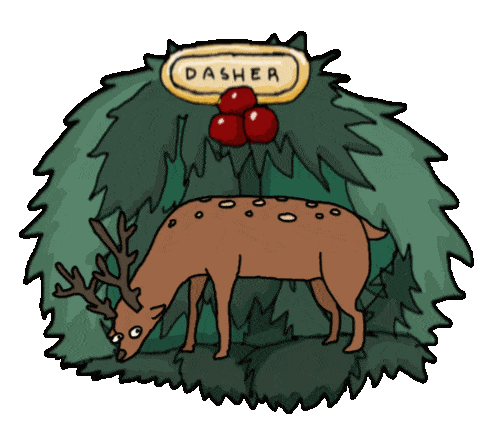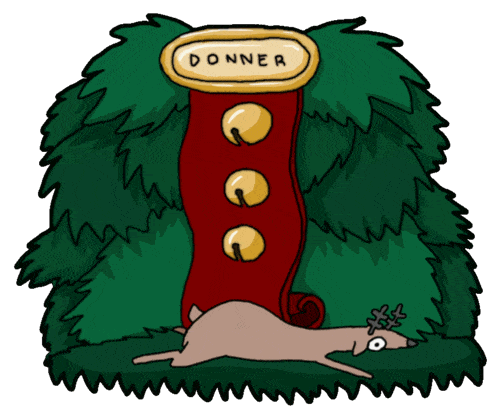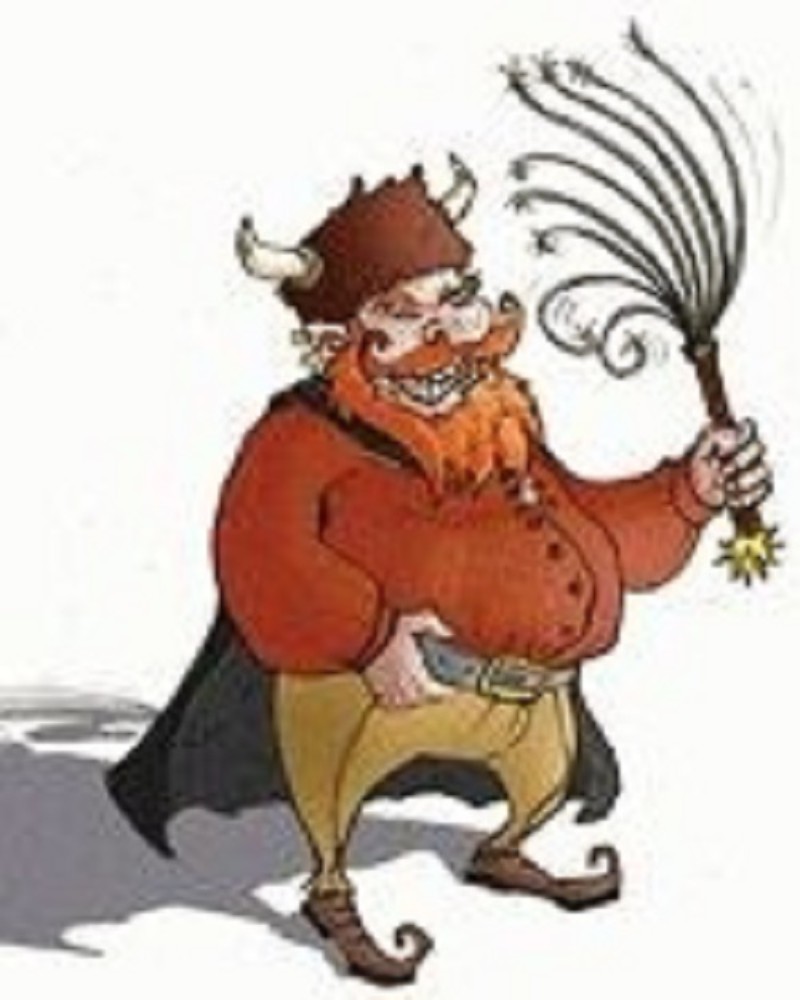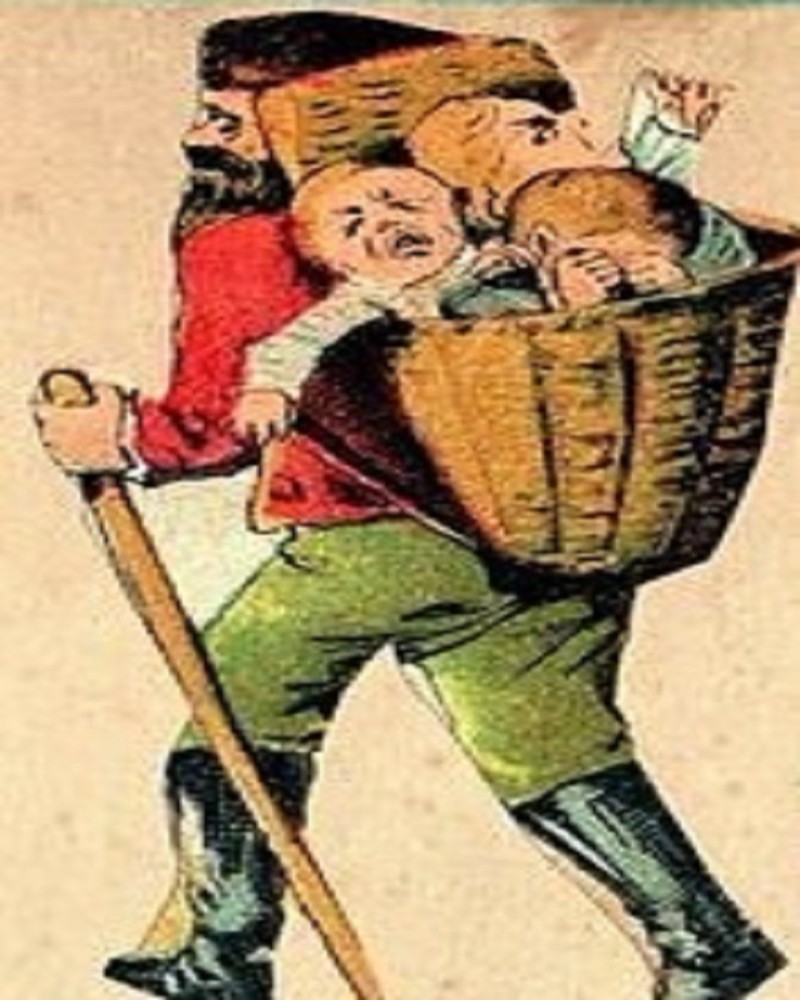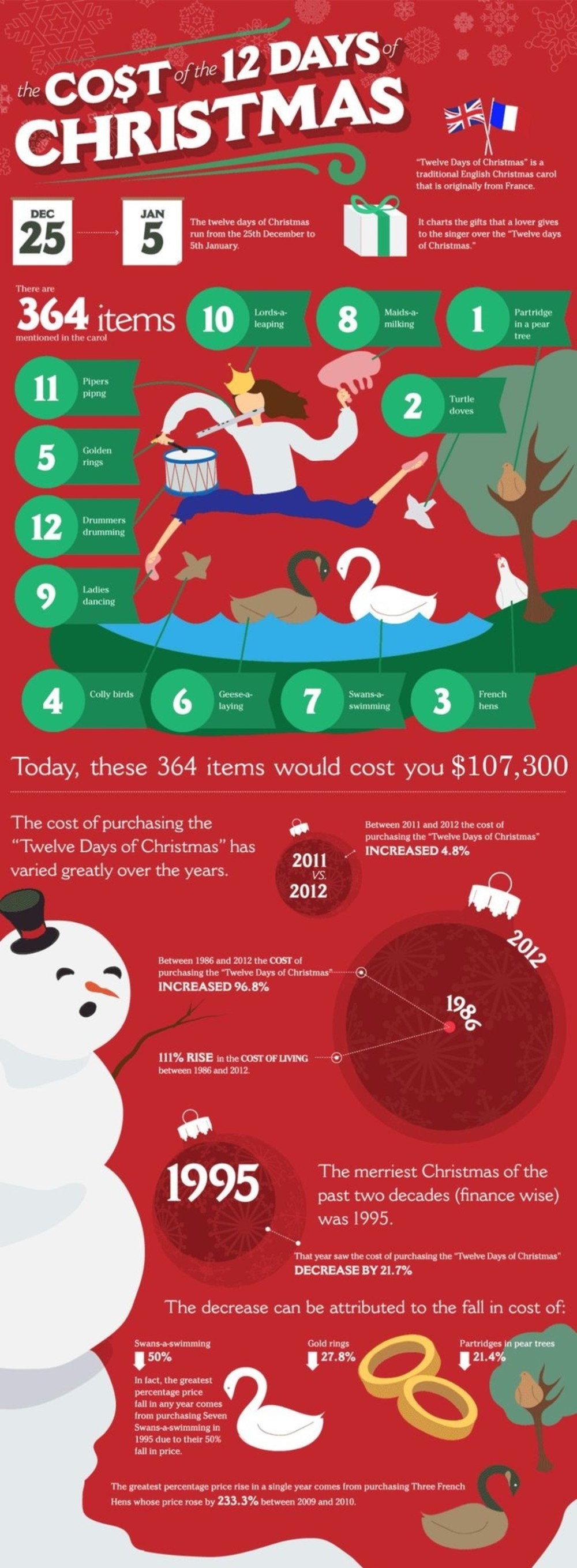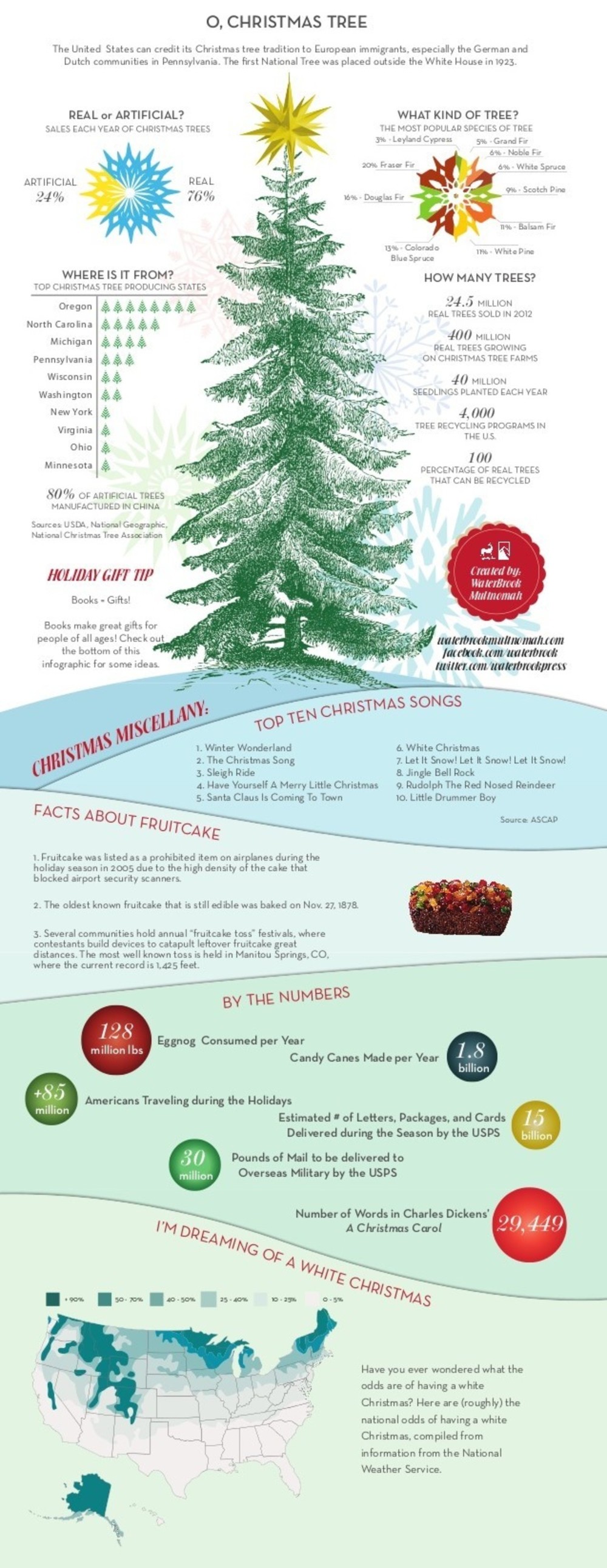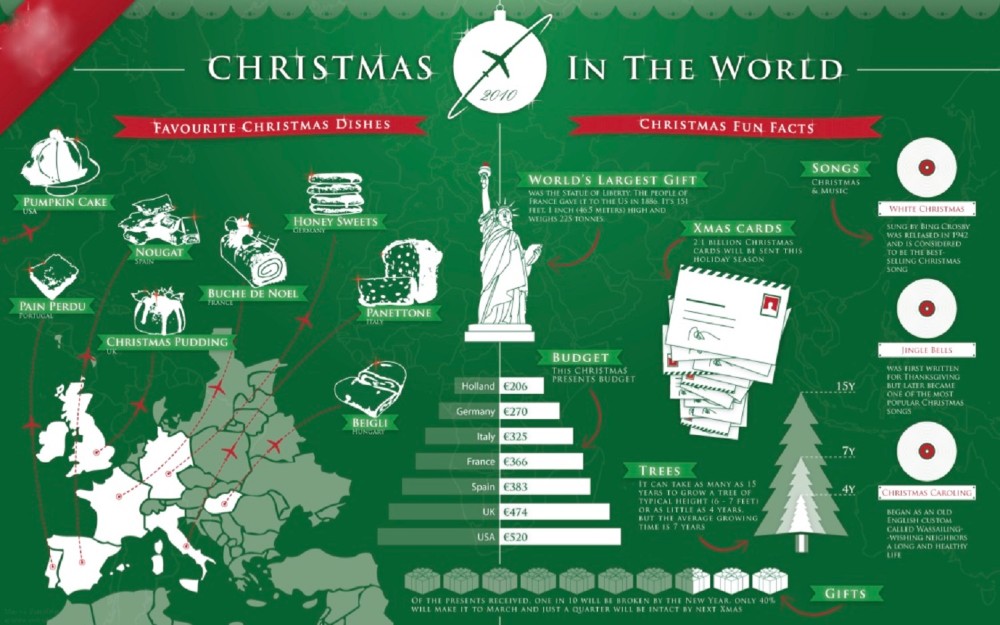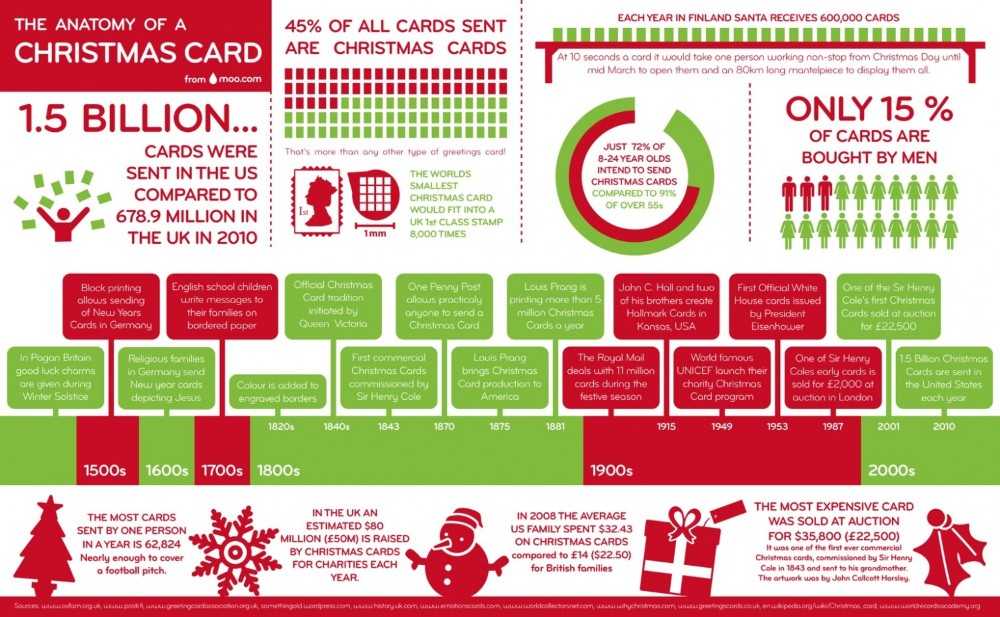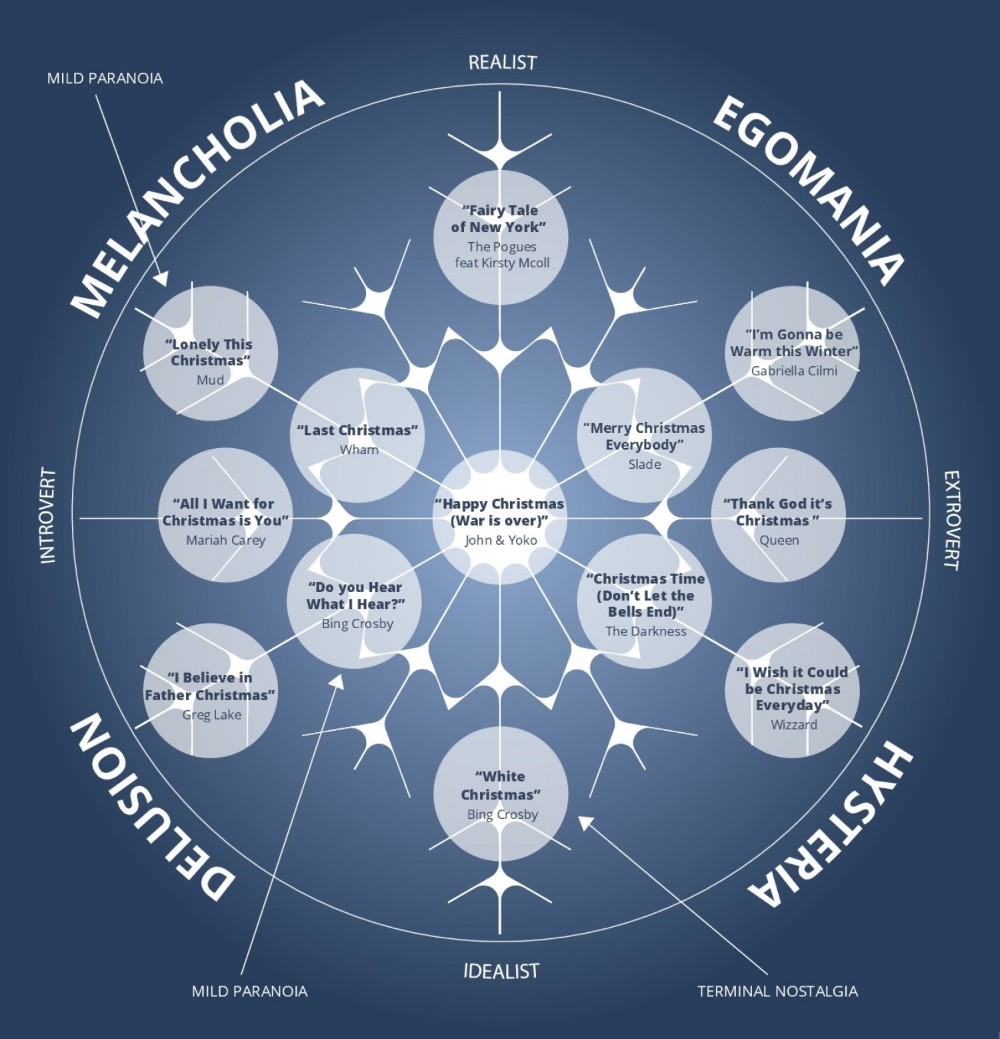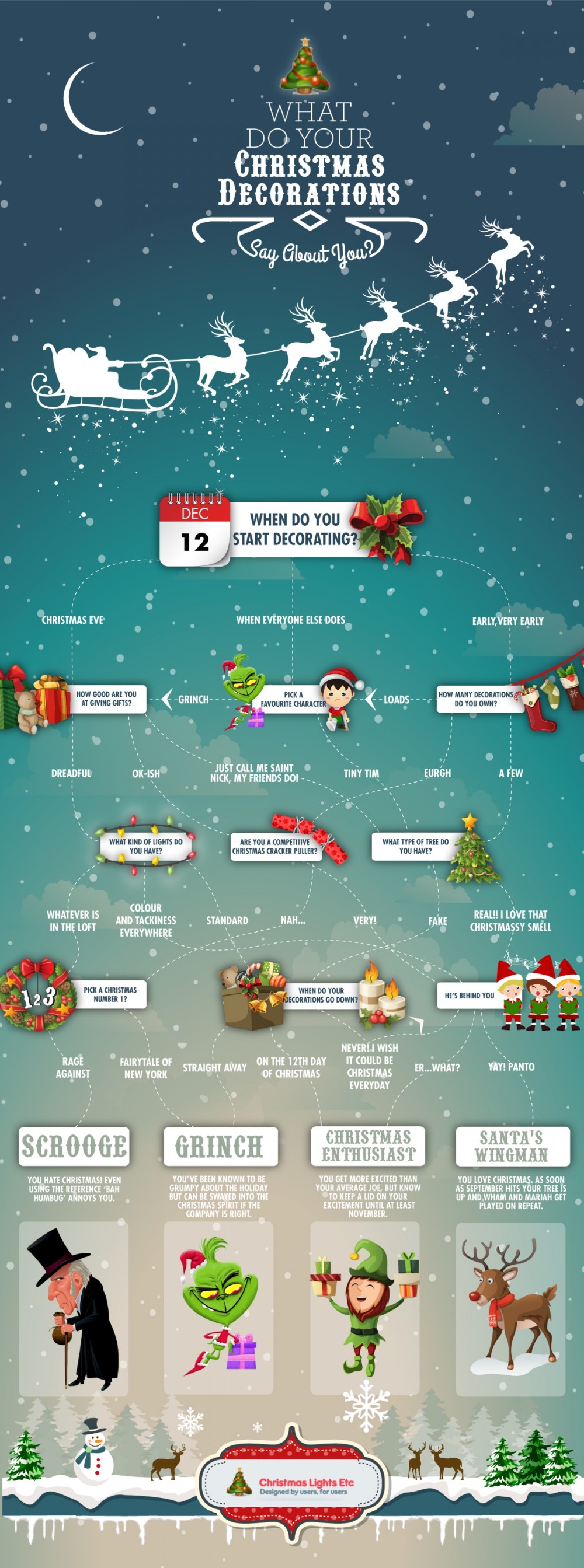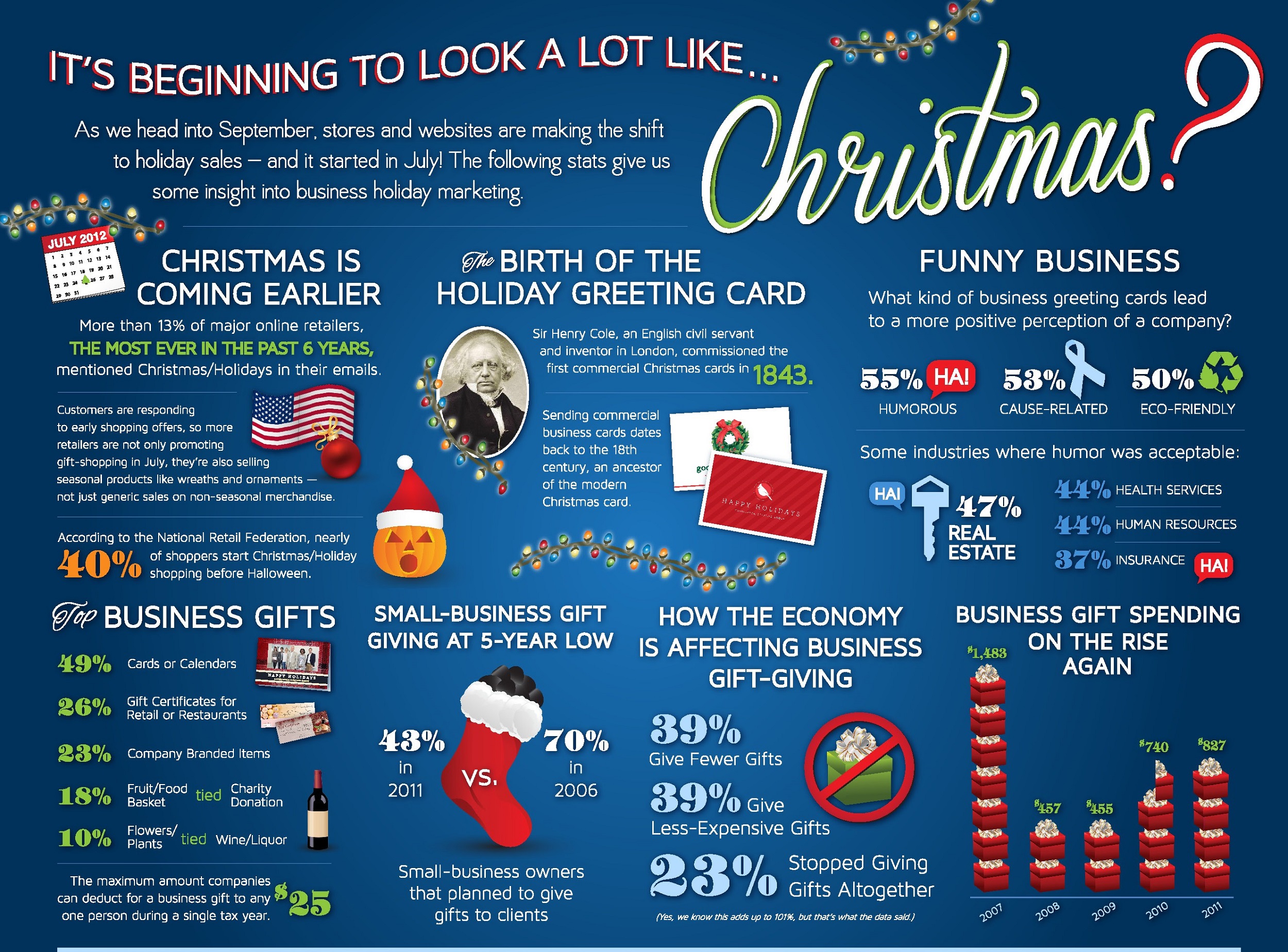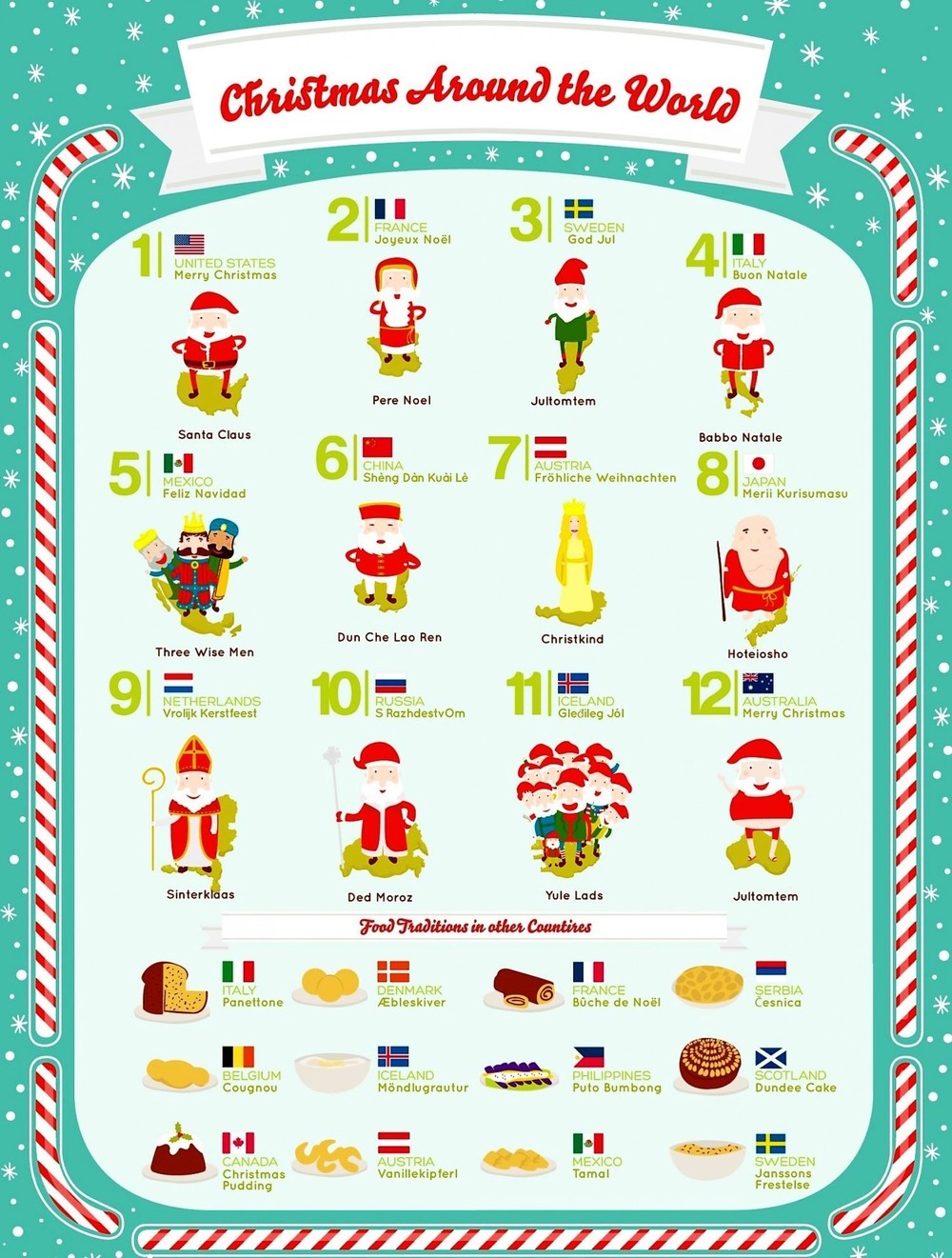
The customs of the holiday season, which include St. Nicholas Day, New Years Day, and Epiphany, as well as Christmas, often incorporate earlier pagan traditions that have been appropriated and adapted for contemporary use. Customs that encourage little children to be good so as to deserve their Christmas gifts often come with a dark side: the punishment you'll receive from a monster or evil being of some sort if you aren't good! These nefarious characters vary from place to place, and they go by many different names and images.
1. KRAMPUS
As a tool to encourage good behavior in children, Santa serves as the carrot, and Krampus is the stick. Krampus is the evil demon anti-Santa, or maybe his evil twin. Krampus Night is celebrated on December 5, the eve of St. Nicholas Day in Austria and other parts of Europe. Public celebrations that night have many Krampuses walking the streets, looking for people to beat. Alcohol is also involved. Injuries in recent years have led to some reforms, such as requiring all Krampuses to wear numbers so they may identified in case of overly violent behavior.
Krampus may look like a devil, or like a wild alpine beast, depending on what materials are available to make a Krampus costume. In modern times, people can spend as much as they like to become the best Krampus around—and the tradition is spreading beyond Europe. Many cities in America have their own Krampus Nights now, including the new Krampusfest in Los Angeles this year.
2. JÓLAKÖTTURINN

Jólakötturinn is the Icelandic Yule Cat or Christmas Cat. He is not a nice cat. In fact, he might eat you. This character is tied to an Icelandic tradition in which those who finished all their work on time received new clothes for Christmas, while those who were lazy did not (although this is mainly a threat). To encourage children to work hard, parents told the tale of the Yule Cat, saying that Jólakötturinn could tell who the lazy children were because they did not have at least one new item of clothing for Christmas—and these children would be sacrificed to the Yule Cat. This reminder tends to spur children into doing their chores! A poem written about the cat ends with a suggestion that children help out the needy, so they, too, can have the protection of new clothing. It's no wonder that Icelanders put in more overtime at work than most Europeans.
3. FRAU PERCHTA

Tales told in Germany and Austria sometimes feature a witch named Frau Perchta who hands out both rewards and punishments during the 12 days of Christmas (December 25 through Epiphany on January 6). She is best known for her gruesome punishment of the sinful: She will rip out your internal organs and replace them with garbage. The ugly image of Perchta may show up Christmas processions in Austria, somewhat like Krampus.
Perchta's story is thought to have descended from a legendary Alpine goddess of nature, who tends the forest most of the year and deals with humans only during Christmas. In modern celebrations, Perchta or a close relation may show up in processions during Fastnacht, the Alpine festival just before Lent. There may be some connection between Frau Perchta and the Italian witch La Befana, but La Befana isn't really a monster: she's an ugly but good witch who leaves presents.
4. BELSNICKEL

Belsnickel is a male character from southwestern German lore who traveled to the the United States and survives in Pennsylvania Dutch customs. He comes to children sometime before Christmas, wearing tattered old clothing and raggedy fur. Belsnickel carries a switch to frighten children and candy to reward them for good behavior. In modern visits, the switch is only used for noise, and to warn children they still have time to be good before Christmas. Then all the children get candy, if they are polite about it. The name Belsnickel is a portmanteau of the German belzen (meaning to wallop) and nickel for St. Nicholas. See a video of a Belsnickel visit here.
Knecht Ruprecht and Ru Klaas are similar characters from German folklore who dole out beatings to bad children, leaving St. Nicholas to reward good children with gifts.
5. HANS TRAPP

Hans Trapp is another "anti-Santa" who hands out punishment to bad children in the Alsace and Lorraine regions of France. The legend says that Trapp was a real man, a rich, greedy, and evil man, who worshiped Satan and was excommunicated from the Catholic Church. He was exiled into the forest where he preyed upon children, disguised as a scarecrow with straw jutting out from his clothing. He was about to eat one boy he captured when he was struck by lightning and killed—a punishment of his own from God. Still, he visits young children before Christmas, dressed as a scarecrow, to scare them into good behavior.
6. PÈRE FOUETTARD
aka "Father Whipper" is an evil butcher who kidnapped three lost children, murdered them by slitting their throats, carved them up like meat and put 'em in a salting tub. Then, St. Nicholas shows up and the butcher tries to ingratiate himself by offering St. Nick some of his best meat. Instead, 'Santa' resurrects the children from the dead and sends them home. But seeing an opportunity for the butcher to repent his sins, he turns him into Father Whipper, his of eternal servant and punisher of bad children..
7. THE YULE LADS

The Jólasveinar, or Yule Lads, are 13 Icelandic trolls, who each have a name and distinct personality. In ancient times, they stole things and caused trouble around Christmastime, so they were used to scare children into behaving, like the Yule Cat. However, the 20th century brought tales of the benevolent Norwegian figure Julenisse (Santa Claus), who brought gifts to good children. The traditions became mingled, until the formerly devilish Jólasveinar became kind enough to leave gifts in shoes that children leave out ... if they are good boys and girls.
8. GRÝLA
All the Yule Lads answer to Grýla, their mother. She predates the Yule Lads in Icelandic legend as the ogress who kidnaps, cooks, and eats children who don't obey their parents. She only became associated with Christmas in the 17th century, when she was assigned to be the mother of the Yule Lads. According to legend, Grýla had three different husbands and 72 children, all who caused trouble ranging from harmless mischief to murder. As if the household wasn't crowded enough, the Yule Cat also lives with Grýla. This ogress is so much of a troublemaker that the Onionblamed her for the 2010 eruption of the Eyjafjallajökull volcano.
On December 1, 1989, a new chapter of Griswold family dysfunction was unleashed upon the world when National Lampoon's Christmas Vacation made its debut in movie theaters and an instant holiday classic was born. Here are 27 things you might not know about everyone’s favorite Christmas comedy.

1. THE MOVIE IS BASED ON A SHORT STORY.
Like the 1983 original, Christmas Vacation is based on a short story, “Christmas ‘59,” written by John Hughes for National Lampoon in December 1980. Its literary predecessor is paid tribute to when Clark is trapped in the attic and pulls out a box of old home movies, including one labeled “Christmas ’59.” (Eagle-eyed viewers might notice that when Clark is watching the film, it actually says “Christmas 1955.”)
2. CLARK GREW UP IN SAMANTHA STEVENS’S HOUSE.
If Clark’s childhood home featured in those old movies looks familiar, that’s because it’s the same house featured on Bewitchedas well as The New Gidget. Except it’s not a house at all; it’s part of the Warner Bros. back lot, located on what is known as Blondie Street. The rest of the Griswolds’ neighborhood is on a studio back lot as well. And if the home of their snooty neighbors, Todd and Margo, looks familiar, that’s because it’s where Roger Murtaugh (Danny Glover) and his family lived in Lethal Weapon.
3. JOHN HUGHES WASN’T A FAN OF SEQUELS.
Though many of Hughes’ films have spawned sequels, the man himself was not a fan of retreads. “The only sequels I was involved in were under duress,” Hughes once stated in an interview. Though he’s credited as a writer on European Vacation, he said that was only because he had created the characters. “But the studio came to me and begged for another [Vacation movie], and I only agreed because I had a good story to base it on. But those movies have become little more than Chevy Chase vehicles at this stage. I didn't even know about Vegas Vacation until I read about it in the trades! Ever since it came out, people have been coming up to me with disappointed looks on their faces, asking ‘What were you thinking?’ ‘I had nothing to do with it! I swear!’”
4. IT’S ONE OF ONLY TWO CHRISTMAS MOVIES RELEASED IN 1989.
Though the holiday season is usually packed with Christmas-themed movies, Christmas Vacation was one of only two that were released in 1989. The other was John Hancock’s Prancer. Johnny Galecki, a.k.a. Rusty Griswold, starred in both.
5. AUDREY IS (MIRACULOUSLY) OLDER THAN RUSTY.

In both the original Vacationand European Vacation, Rusty is believed to be the older of the two Griswold children. In Christmas Vacation, Rusty somehow morphs into Audrey’s younger brother.
6. THE FILM HAS TIES TO IT’S A WONDERFUL LIFE.
In addition to footage from the Frank Capra classic actually appearing in the film, Christmas Vacation has another fun tie to It’s a Wonderful Life: Frank Capra’s grandson, Frank Capra III, is Christmas Vacation’s assistant director.
7. THE CAST OF CHRISTMAS VACATION WAS PRETTY IMPRESSIVE.
In addition to featuring future stars Johnny Galecki and Juliette Lewis (who scored a Best Supporting Actress Oscar nomination three years later for her role in Cape Fear), star Beverly D’Angelo was most impressed with the older actors who came along for the Christmas Vacation ride. “I attribute that to Jeremiah Chechik and his direction in bringing in E.G. Marshall, Doris Roberts, and Diane Ladd,” she noted. “That was really a special cast.”
8. IN A WAY, STANLEY KUBRICK IS TO THANK FOR CHRISTMAS VACATION.
Christmas Vacation marked the directorial debut of Jeremiah Chechik, who began his career as a fashion photographer for Vogue then moved into commercial directing. “I had made these commercials that became quite iconic here in the U.S.,” Chechik told to Den of Geek! in 2011. “They were very dark and sexy and sort of a little bit ahead of their time in terms of style. And what happened was they gained the notice of [Stanley] Kubrick, who had mentioned them as his favorite American filmmaking, ironically, in a New York Times article.” It didn’t take long for Chechik’s phone to start ringing and for studios to start sending him scripts. “And the script that really piqued my interest was Christmas Vacation," he said. "And the reason is I had never done any comedy—ever.”
9. CHECHIK HAD NEVER SEEN A VACATION MOVIE.
“I hadn't seen the first two [Vacation movies], and so I wasn't really influenced by anything other than the fact that it was a big—at the time—their big Christmas movie, and comedy,” Chechik said. “And I just felt if I could crack this maybe there's a whole other world of filmmaking for me.” Following Christmas Vacation, Chechik directed Benny & Joon, Diabolique, and The Avengers plus episodes of The Bronx is Burning,Gossip Girl, Chuck,and Burn Notice.
10. THE MOVIE HAD A HUGE BUDGET, PARTICULARLY FOR A COMEDY.
A $27 million budget, to be exact. Which was particularly high considering that the film had no special effects a la Ghostbusters (which was made for $30 million). But it had no trouble making its budget back; the film’s final domestic gross was $71,319,526.
11. ROGER EBERT DID NOT LOVE THE FILM.
Though it has become a bona fide holiday classic, not everyone was a fan of Christmas Vacation. In his two-star review of the film, Roger Ebert described the movie as “curious in how close it comes to delivering on its material: Sequence after sequence seems to contain all the necessary material, to be well on the way toward a payoff, and then it somehow doesn't work.”
12. IT’S THE ONLY SEQUEL IN THE VACATION FRANCHISE TO HAVE ITS OWN SEQUEL.

But don’t be disappointed if you didn’t know that. Or haven’t seen it. The 2003 film, National Lampoon’s Christmas Vacation 2: Cousin Eddie’s Island Adventure, was made for television. It finds Randy Quaid and Miriam Flynn (as Eddie and Catherine) stranded on an island in the South Pacific for the holidays. Yes, really. It currently holds a 12 percent approval ratingon Rotten Tomatoes.
13. AUDREY IS THE ONLY GRISWOLD TO APPEAR IN CHRISTMAS VACATION 2.
Dana Barron, who played Audrey in the original Vacation, reprised her role for the Christmas Vacation sequel. Eric Idle, who appeared in European Vacation, also makes an appearance, playing “English Victim.”
14. COUSIN EDDIE IS RANDY QUAID’S BEST-KNOWN CHARACTER.
At least it’s the role that gets him the most recognition. In a 1989 interview with the Los Angeles Times, Quaid admitted that he was amazed by the impact the character made. “People still come up to me and quote lines from that part. I get a lot of recognition from that role—probably as much, if not more, than any other.”
15. COUSIN EDDIE IS BASED ON A REAL GUY.
Quaid borrowed many of Cousin Eddie’s mannerisms from a guy he knew growing up in Texas, most notably his tendency toward tongue-clicking. But Eddie’s sweater/Dickie combo? That was an idea from Quaid’s wife.
16. YOU CAN BUY YOUR OWN DICKIE.
National Lampoon’s Christmas Vacation Collectibles is a websitededicated to all things Christmas Vacation (obviously). Among the many fun items are Cousin Eddie wardrobe staples, moose mugs, and punch bowls.
17. EDDIE’S SON, ROCKY, DOESN’T SPEAK IN THE FILM.
Nope, not a word.
18. AUNT BETHANY IS BETTY BOOP.
Christmas Vacation marked the final film of Mae Questel, who began her career as the voice of Betty Boop in 1931. She passed away at the age of 89 in January of 1998.
19. BETHANY AND LOUIS’ ENTRANCE MADE THE EARTH SHAKE.
At the same time the production filmed the arrival of Uncle Louis and Aunt Bethany at the Griswold house, a minor earthquake struck. The camera shakes slightly as a result of it as Bethany walks through the front door.
20. CHRISTMAS VACATION WENT STRAIGHT TO VIDEO IN ENGLAND.
Though the movie is a popular holiday film in the UK too, it was never actually shown in theaters there. Instead, it went straight to home video.
21. YOU WON’T HEAR “HOLIDAY ROAD” IN CHRISTMAS VACATION.
Christmas Vacation is the only movie in the series that doesn’t feature Lindsey Buckingham’s song, “Holiday Road.” Instead, a new song—the aptly titled “Christmas Vacation”—was written for the film by married songwriting duo Barry Mann and Cynthia Weil. A cover of the song appears on the 2007 Disney Channel Holiday album.
22. RANDY QUAID IS THE THIRD COUSIN OF GENE AUTRY.
Which may just sound like a random. But at the end of the film, when the police raid the Griswold home, the version of “Here Comes Santa Claus” being used is Autry’s.
23. ELLEN GRISWOLD LIED TO THE COPS.
In the same scene, Ellen Griswold apologizes to Mrs. Shirley—the wife of Clark’s boss and Eddie’s kidnapping victim—assuring her that “This is our family's first kidnapping,” when, in fact, it is their second. At least the second that we know of: In the first Vacation film, the Griswolds force Lasky, the security guard at Wally World (played by John Candy), to open the park for them.
24. CHEVY CHASE, BEVERLY D’ANGELO, AND JULIETTE LEWIS REUNITED IN 2012.
The trio got together to film a series of Old Navy commercials for the holiday season. Though Johnny Galecki wasn’t there, two previous Rustys—Anthony Michael Hall and Jason Lively—were. As was Dana Barron.
25. JOHNNY GALECKI RECEIVED AN AWARD FROM CHEVY CHASE.
In a 2012 interview, The Sydney Morning Herald asked Johnny Galecki whether he has kept in touch with Chevy Chase. He admitted that “the only time I’ve seen him since that movie, which was 21 years ago I think, is when he presented us with our People’s Choice Award, so that was really neat. If you’re going to run into Chevy again it may as well be as he’s giving you an award.”
26. CHEVY CHASE AND BEVERLY D'ANGELO WERE ANXIOUS TO SEE ANOTHER VACATION MOVIE HAPPEN.
On July 29, 2015, the latest film in the Vacation franchise—simply titled Vacation—made its debut. And it couldn't have happened soon enough for Chase and D'Angelo. In 2011, Chase told Ain’t It Cool News that “I just got off the phone with Beverly D’Angelo. We are trying to work up a new Vacation and apparently Warner’s is working on one with grandchildren, but the one that Bev and I want … You know, we are just trying to think of ideas, because she is very funny and very brilliant, so when you get her in a writing mood and me in writing mood, it’s good, but it’s very hard to get the time.”
27. THE STUDIO WON THAT ONE.
Chase and D’Angelo may have had their own ideas, but the studio moved ahead with that whole “one with grandchildren” thing. Written and directed by John Francis Daley (Sam from Freaks and Geeks) and Jonathan M. Goldstein (who wrote Horrible Bosses), Vacation featured a grown-up Rusty (played by Ed Helms) taking his own family on a road trip.
~
~
~
~
~
~
~
